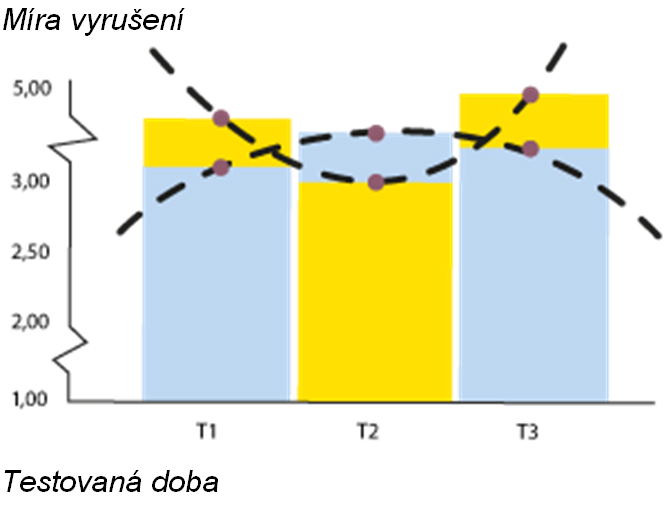
Study of sound in real conditions of open-plan offices
The results were clear - a better acoustic environment significantly improves work performance:
• 30% less distraction while working
• 29% lower distraction in immediate proximity
• 22% less distraction at a greater distance from the noise source
• 15% less stress
| About the study The study was conducted on two floors of the Sundbyberg city hall near Stockholm. The floors were nearly identical with the same layout, furniture, and number of workstations. People were performing similar types of work. Sound absorbers with an articulation class of 190 were installed on the ceilings. A total of 151 employees participated in the study. |
Unique concept of the study
The study is unique in the following respects:
- It was a study conducted in real conditions, i.e., in actual offices, whereas most other studies are done in controlled environments. The results of the study are more meaningful as they also include psychological factors.*
- The study was carried out on two control groups, and the same phenomenon was observed in both groups.
1. Preparation of the acoustic environment
Over the weekend, the acoustic environment on both floors was changed without employees being informed:
• On the 4th floor, the already good acoustic environment was further improved by the installation of wall absorbers.
• On the 5th floor, half of the ceiling absorbers were replaced with hard, sound-reflecting panels with lower sound absorption capacity.
2. Replacement of better absorbers with worse and vice versa
After three weeks, the acoustic conditions were changed again. The replacement occurred over the weekend when no employees were present.
• On the 4th floor, where the acoustic environment was originally good, it was replaced with worse absorbers that absorb less sound and also reflect sound.
• On the 5th floor, the conditions were improved by reinstalling high-quality ceiling and wall absorbers.
3. Again replacing absorbers
After three weeks, the absorbers were replaced again, which meant:
• The 4th floor had its good acoustic environment back.
• The 5th floor had its worse acoustic environment back.
Comfort distance

The acoustics in the work environment were measured several times during the study according to the ISO 3382-3 guideline. This measured the distance employees were from the noise source, referred to as acoustic comfort.
The study showed that people are indeed strongly influenced by the acoustic environment in open-space offices. The comfort distance (acoustic comfort) was very different, mainly during speech propagation:
The comfort distance was 35% shorter on the floor with better acoustics.
How people perceived distracting sounds
 |
 |
The curve points in the middle (T2) show the improvements and deteriorations in the acoustic environment and its effect on the level of distraction.
Distraction at immediate proximity to the noise source
 |
 |
The curve points in the middle (T2) show the level of distraction in better and worse acoustic conditions.
Perceived distraction at a greater distance
 |
 |
The curve points in the middle (T2) illustrate the difference between the improved and worsened acoustic environment.
Perceived stress level
 |
 |
The curve points in the middle illustrate the difference between improved and worsened conditions.
Read the entire study
The study was conducted in cooperation with the Stress Research Institute in Stockholm under the leadership of Dr. Aram Seddigh in the spring of 2014 at the city hall building. The results were published in the Journal of Environmental Psychology in September 2015.
Read and download the entire study at www.sciencedirect.com
| The Stress Research Institute is a national research center for the study of sleep quality, stress, and health. The Institute is part of the Faculty of Social Sciences at the University of Stockholm. |
 |













